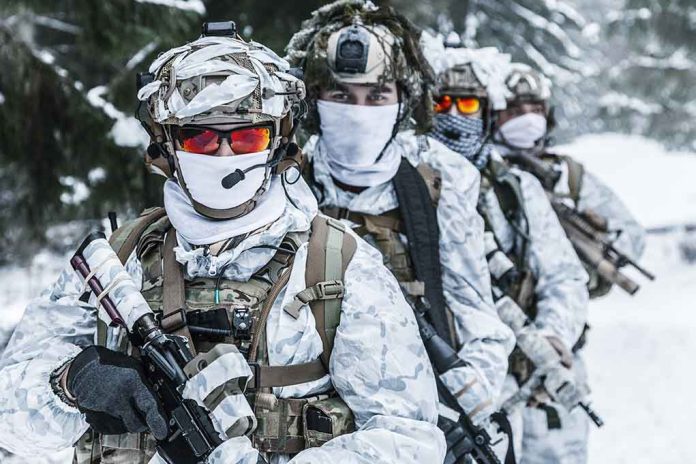
Russia’s increased military presence in the Arctic prompts concerns, as U.S. and NATO strategize potential responses.
At a Glance
- Russia’s Arctic strategy aims to restore great power status, impacting U.S. military strategy.
- The Arctic is crucial for Russia’s defense and economic projection.
- New military capabilities include hypersonic missiles and nuclear drones.
- Western nations face a decade-long gap to match Russia’s Arctic military strength.
Russia’s Strategic Ambitions in the Arctic
Russia has identified the Arctic as central to its mission of reasserting its presence as a formidable global power. A substantial military initiative underscores this aspiration, with operations in the northern reaches holding significant implications for the United States. The Arctic landscape facilitates Russia’s defense mechanisms and supports the development of essential economic prospects.
The Northern Fleet, stationed in Severomorsk, is pivotal in securing Russia’s vast northern boundary, thereby ensuring its capability to extend influence across the strategic North Atlantic. Despite the end of the Cold War, old tactics, such as bastion defenses, remain prevalent in securing pivotal Arctic territories.
Military Infrastructure and Capabilities
There has been a robust increase in Russia’s Arctic military infrastructure, with investments spread across airfields, radar systems, and early warning mechanisms. Integral to this establishment is the refurbishment of Soviet-era bases, enhancing vigilance over Arctic and maritime domains. This strategic bolstering coincides with advancements in Russia’s offensive capabilities, such as hypersonic cruise missiles and nuclear-equipped drones.
Russia’s extensive icebreaker fleet, unrivaled globally, further consolidates dominance, facilitating security and commercial activities. However, such militarization imposes severe constraints on NATO, limiting its Arctical operational latitude and interactions.
U.S. and NATO’s Response
Faced with revitalized Russian militarization, the U.S. and NATO find themselves reevaluating their tactical position in the Arctic. The strategic importance of the region is underscored by fresh sea routes and untapped resources revealed as ice caps retreat. In this context, Russia’s Arctic bases far surpass NATO’s in both number and sophistication.
“Given NATO’s desire to build up military potential near the Russian borders, as well as to expand the North Atlantic Alliance at the expense of Finland and Sweden, retaliatory measures are required to create an appropriate grouping of troops in Northwest Russia.” – Sergei Shoigu, Russian defense minister
The Arctic’s burgeoning strategic importance is only amplified by Russia’s expansive military investments. Western experts emphasize that matching Russia’s current Arctic capabilities could take Western nations over a decade.
Diplomacy Amidst Rising Tensions
The ongoing conflict in Ukraine exacerbates tensions in the Arctic, hindering the diplomatic dialogue that once characterized international cooperation in the region. The specter of militarization now places strategic dialogue and peaceful coexistence at risk, demanding careful consideration to balance military deterrence and diplomatic engagement.
The decision by Finland and Sweden to potentially join NATO signifies a shift in the strategic fabric of the Arctic region, leaving Russia isolated in its non-NATO stance. This evolving geopolitical landscape requires vigilant monitoring and strategic flexibility from the United States and its allies.
Sources:
- THE ICE CURTAIN: RUSSIA’S ARCTIC MILITARY PRESENCE
- Dark Arctic: NATO allies wake up to Russian supremacy in the region
- The Russian Arctic Threat: Consequences of the Ukraine War










